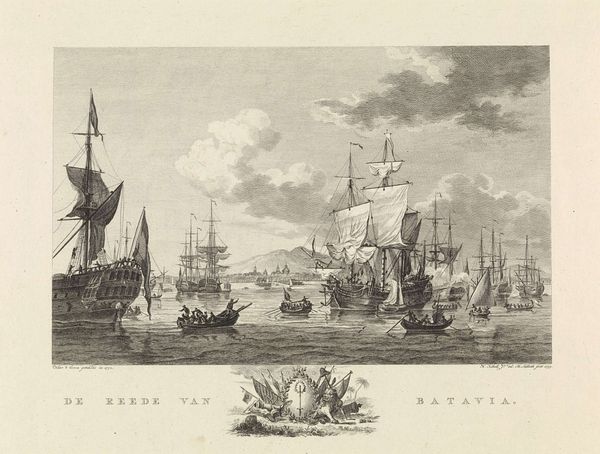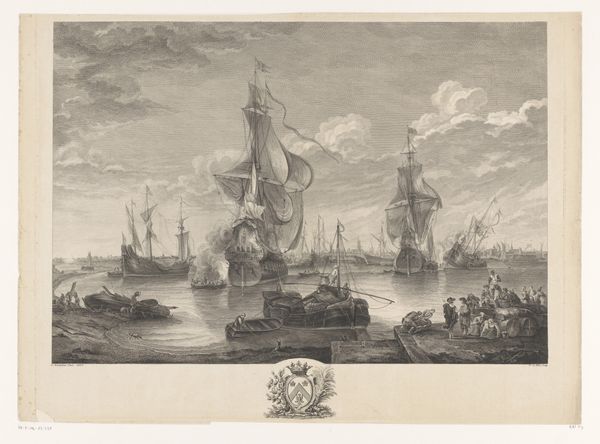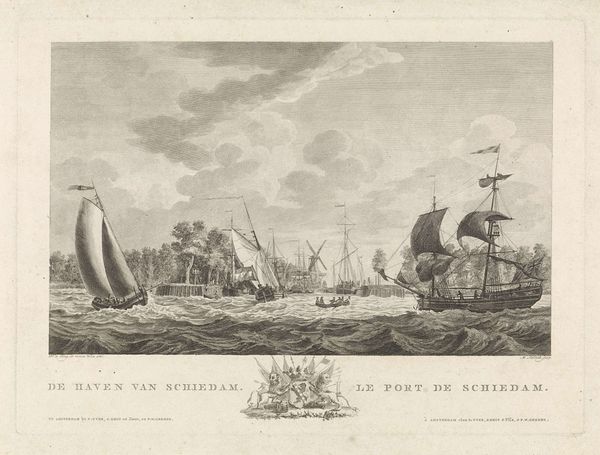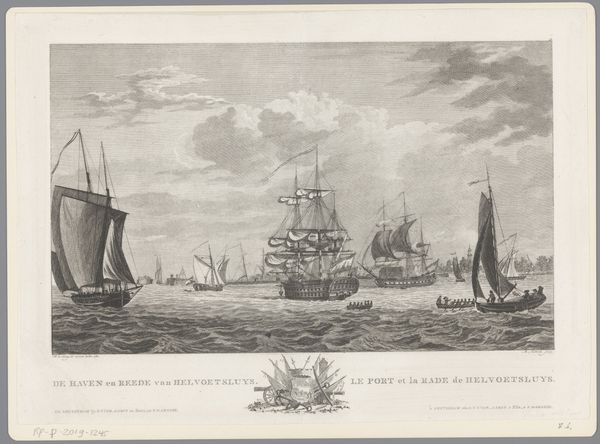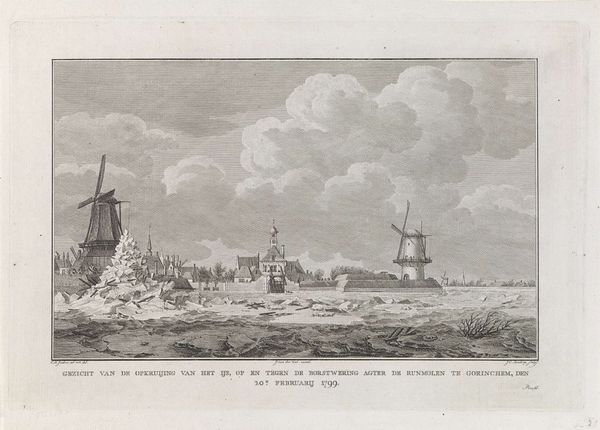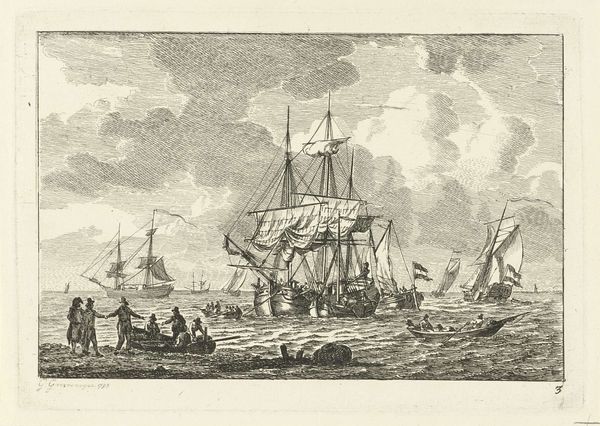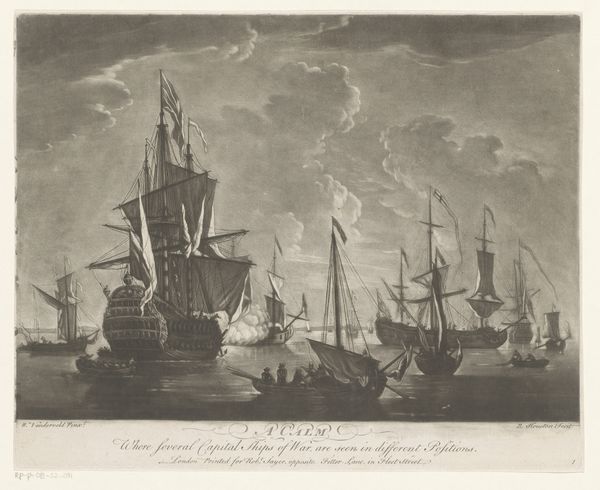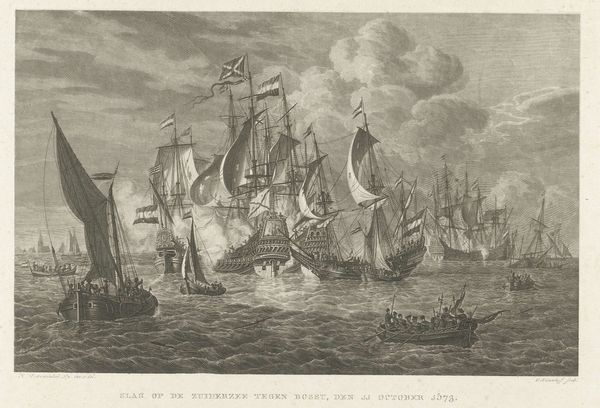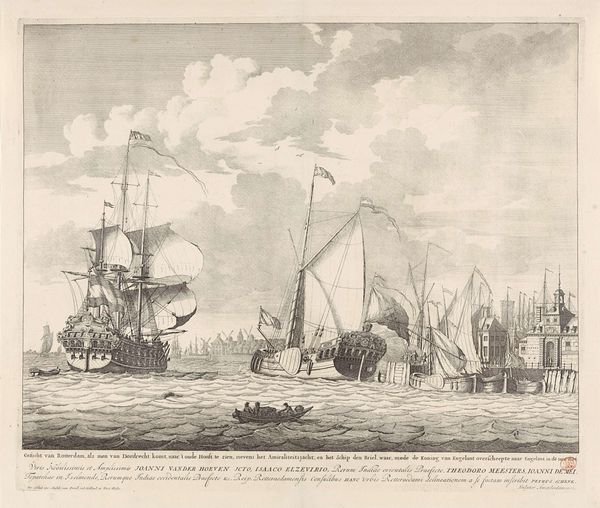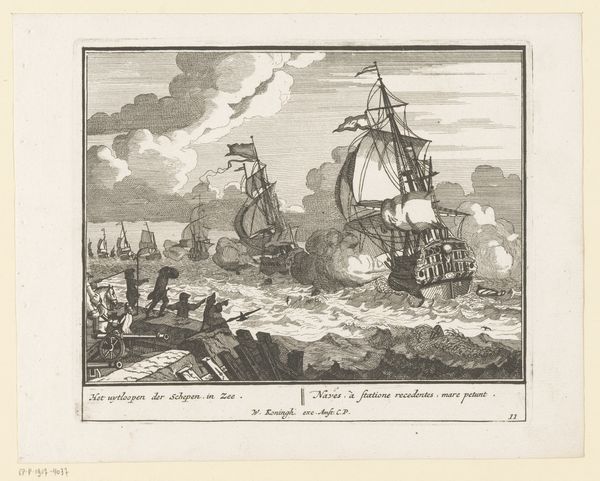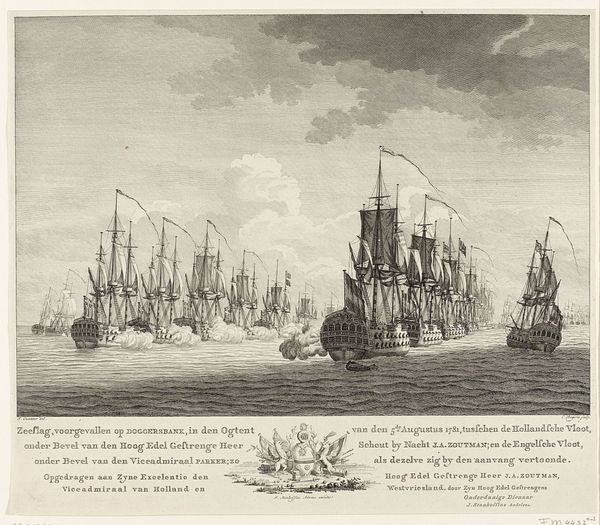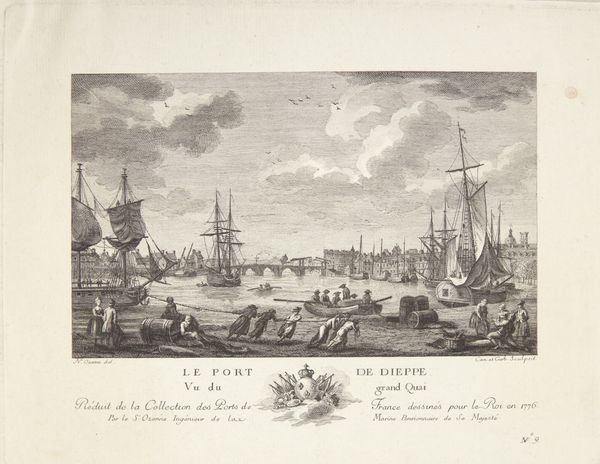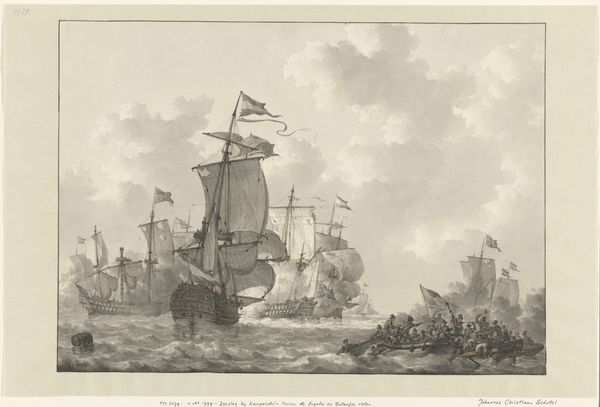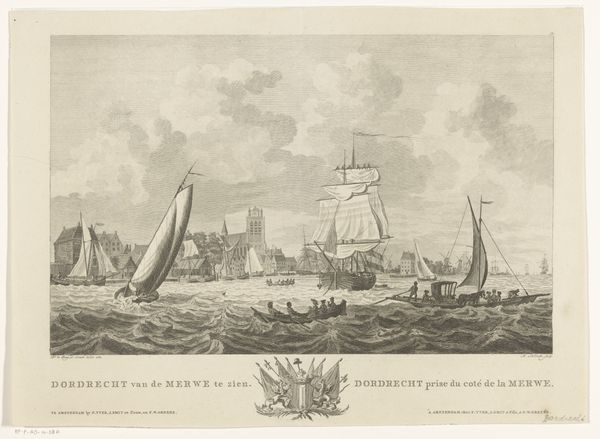
print, engraving
#
dutch-golden-age
# print
#
old engraving style
#
landscape
#
orientalism
#
cityscape
#
history-painting
#
engraving
Dimensions: height 413 mm, width 327 mm
Copyright: Rijks Museum: Open Domain
Curator: Welcome. We are looking at Mathias de Sallieth's 1779 engraving, "Gezicht op het eiland Onrust bij Batavia," which translates to "View of Onrust Island near Batavia." Editor: My initial impression is the mood is quite tense. The dark ships amidst the turbulent waves definitely suggest a sense of unease. Curator: Notice how the composition directs our gaze. The artist meticulously renders the foreground ships, drawing the eye toward the activity on the water, while the architectural elements on the island of Onrust establish depth. It’s all very precisely delineated. Editor: Yes, but to see Batavia depicted this way immediately brings to mind the complex history of Dutch colonialism and the exploitative trade routes of the time. "Onrust," ironically named "Unrest," becomes a powerful symbol of the era. The visual precision does little to hide the violent undercurrents. Curator: Violence? I'm not sure I agree that the engraving necessarily communicates that sentiment explicitly. More crucial to me is de Sallieth's mastery of line. Look at the varying thickness and density used to create volume and shadow. The clouds, for instance, achieve a remarkable three-dimensionality. Editor: But isn't that skillful technique further implicated in creating a palatable, aestheticized view of a colonial reality? By focusing on the formal aspects, aren't we potentially obscuring the stories of those who were directly impacted by Dutch expansion in what is now Jakarta? The meticulous detail serves to normalize what was a highly disruptive and oppressive force. Curator: Perhaps, but let’s not disregard the artistry on display. There’s a considered use of visual language present. From the inclusion of native craft within view of European vessels, there’s also a depiction of the interaction between different maritime techniques on display. It's the skillful organization of its aesthetic elements, in a carefully designed structure of light and shadow, that elevates the print beyond mere document. Editor: I’ll concede that, but this island was a key strategic point for the Dutch East India Company, deeply tied to its economic and military control over the region. This work becomes, perhaps unintentionally, a record of the machinery of empire. Curator: Interesting thoughts. The artwork undeniably acts as a testament to both the capabilities of eighteenth-century printmaking and to the expansionist narrative it inadvertently depicts. Editor: A perspective which, alongside this visual document, offers an understanding of colonialism and trade through this important historical port city.
Comments
No comments
Be the first to comment and join the conversation on the ultimate creative platform.
